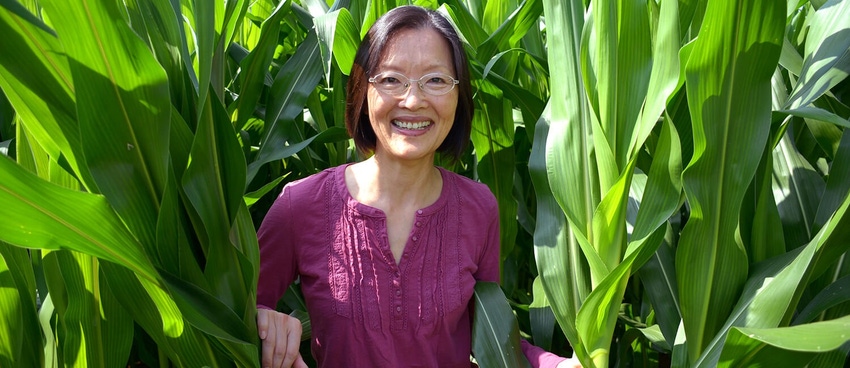Cows hold promise in future food systems
Study of processing residues fed on dairy farms to provide insights on how these feedstuffs could be utilized.
December 18, 2019

Animal agriculture often endures criticism for its alleged contributions to the global climate change problem, with some naysayers ranking the industry second only to the population explosion as a root contributor to global warming and other weather-related devastation, according to an announcement from the University of Pennsylvania's School of Veterinary Medicine (Penn Vet).
In reality, Penn Vet said farmers across all facets of animal agriculture — beef, dairy, poultry and pork — have long embraced evolving techniques to produce meat, milk and eggs as efficiently and sustainably as possible, minimizing the agriculture industry’s climate footprint in the process.
Now, researchers at Penn Vet are finding that these "culprits" — cows and other agricultural livestock — are actually critical partners in developing sustainable, regenerative agro-food systems.
“Animals are natural bioprocessors,” Penn Vet professor of agricultural systems Dr. Zhengxia Dou said, noting that livestock animals' unique and "indispensable" natural biological processes enable them to consume plant and food residues that are either undigestible or unpalatable to people or are no longer sellable for any of a number of reasons. Dou refers to these residues as "IUUB" (indigestible, unpalatable or unsellable biomass), such as those resulting from the surge of processing byproducts generated by the increased popularity of plant-based foods in consumer diets.

“By maximizing the use of IUUB, the livestock sector of agriculture actually contributes to this societal issue in a very positive way,” Dou said.
The animals consuming IUUB are a key component to the wholesomeness of the food system, she added, noting that, without livestock, "we would not be able to convert otherwise wasted biomass into nutritious meat, milk and eggs.”
Right now, Dou’s team at Penn Vet is in the process of conducting a dairy-focused project called “The Amazing Cow.” Funded by the Pennsylvania Department of Agriculture, the study documents the types, amounts and variations of IUUB fed on dairy farms, characterizing important nutritional attributes and giving producers informed insights on how IUUB feedstuffs could be implemented on their farms.
These feedstuffs come in many forms. For example, a dairy operation in Lancaster County, Pa., receives daily deliveries of apple waste from a processing facility that supplies apple slices for school lunches. Another local dairy gets three truckloads of vegetable and fruit discards and expired bread products each week that originate from area distribution centers. No longer sellable or desirable for consumers, these foodstuffs become feed for cattle rather than going to a landfill. Other producers across Pennsylvania have discovered the benefits of brewer’s waste — the huge quantities of sour mash that result from the production of beer — as a viable source of feed.
On a national scale, livestock are consuming millions of pounds of otherwise unusable IUUB created in the production of various everyday products like soybean and canola oils, orange juice, ethanol and more, Penn Vet said.
Even post-consumer food waste generated in restaurants and consumer households can be converted into safe and nutritious feed for livestock. A pilot project in California, "Sustainable Alternative Feed Enterprises" (SAFE), has developed treatment technologies to serve that purpose.
Dou’s team is working with SAFE. Her lab systematically collected and tested the feed samples derived from consumer food waste for feed safety evaluation, analyzing important factors such as mycotoxins, heavy metals, pesticides, microbial contaminants and nutrition parameters.
Besides empowering farmers to make sustainable but sensible animal husbandry decisions, Dou’s team sees their circular, agro-food system model as a key to providing consumers with a healthy diet while reducing the issues some associate solely with livestock production, the Penn Vet announcement said.
Refining the model has opened doors to new sustainable applications, too. “Working with area farmers as well as a large fruit and vegetable wholesale centers, we have recognized some practical issues that need to be addressed in order to grow the adoption of this model further — primarily the logistics of transport and costs and the safe use of the materials on the farm, given their perishable natures,” Dou said. “This has challenged us to look for even more sustainable solutions.”
Addressing some of these challenges has spurred Dou’s team to tackle a new initiative to develop innovative technologies that would unlock the precious resources embodied in highly perishable IUUB materials. Dou said this initiative consists of creating an IUUB database, conducting research trials and assessing relevant nutritional, environmental and climate impacts.
“Collaborators from a number of Chinese institutions are interested as well,” she added.
Dou’s circular agro-food system model doesn’t just focus on utilizing what goes into an animal but also what comes out. Improving the practices of recycling manure back to cropland remains a key consideration, Penn Vet said. The management impact is twofold: the value of manure nutrients for growing crops and mitigation of water quality issues from spreading manure.
“Pennsylvania was the first state in the country to have a nutrient management law,” Dou said, noting that today, nearly all states have nutrient management laws or regulations in place. A variety of best management practices have been developed by agricultural scientists and extension experts and made available for field adoption by farmers.
Dou noted that, even before implementing tactile manure management, producers can (and often do) adopt precision feeding strategies to optimize nutrient intake for high productivity while minimizing nutrient excretion in manure.
“Livestock farming is an integral part in our agro-food system,” Dou concluded. “These animals can and do have a positive impact on our society, and they have a fantastic story to tell. Producers and those who are in the know need to get out there and share that story.”
You May Also Like



